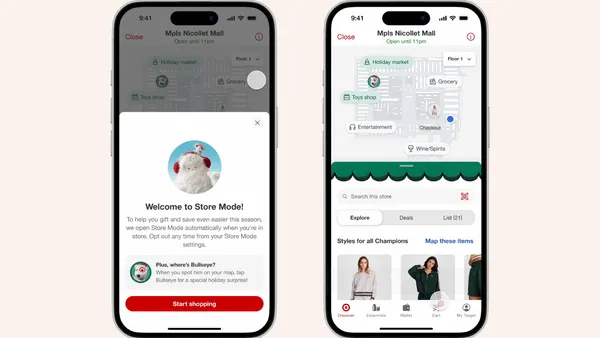Editor's note: The following is a guest post from Mehdi Daoudi, CEO of digital experience intelligence companyCatchpoint.
Behind the scenes retailers are gearing up for the holiday season. And with more physical stores closed this year, providing a fast, reliable online shopping experience is paramount. This is especially true as Amazon has, once again, raised the bar. While its most visible news this summer was the purchase of Whole Foods, another less visible occurrence was just as important.
Despite its huge influx of Prime Day online traffic, which some estimated to be 20 times the norm, Amazon’s web and mobile sites loaded faster — in some cases much faster — than other major retailers like Walmart, which wasn’t even having a big sale that day. From a technical perspective, this is an impressive feat.
Here’s a snapshot of the average webpage load times for the 30 hours of Prime Day for both Amazon and Walmart sites in the U.S., according to Catchpoint's data:
- Amazon desktop: 2.3 seconds
- Walmart desktop: 4.73 seconds
- Amazon mobile: 1.14 seconds
- Walmart mobile: 5.56 seconds
To some, this may seem obvious — Amazon is gobbling up other retailers' businesses because it has huge cash flow and its own AWS infrastructure. Whether other retailers can keep up or not, Amazon has set a new standard when it comes to delivering exceptional digital experiences. Amazon has conditioned shoppers to expect lightning-fast load times of websites, mobile sites and apps.
Given the continued closing of physical retail stores, the key takeaway is clear: Fast-performing sites and apps are now a primary customer service mandate in retailing, and all retailers’ digital performance will be compared to Amazon.
We’ve known for quite some time that consumers get frustrated when their shopping progress is delayed by slow loading sites or apps, but the distinction was mainly between a fast and slow site. Now, it’s about super-fast versus everything else.
In a recent Harris Poll of frequent online shoppers (in this case, those shopping online at least once per month), over three-quarters said that if a retail e-commerce site performed poorly they would tend to avoid shopping there. More than one in five said they would abandon a web page if it took longer than five seconds to load.
So speed will make winners out of the super-fast and perceived laggards out of everyone else, meaning a retailer’s digital experience reputation will become as clear as the distinction between the in-store Nordstrom experience and that of a discounter. And remember that the other speed freak on the block — Google — penalizes the search rankings of sites that load slowly. This may not affect the major players, but small retailers trying to gain a foothold will feel this pain if they’re not fast.
So how can a retailer without the massive resources of an Amazon keep up? We consistently track the performance (speed, availability) of hundreds of retail e-commerce sites worldwide, and there are many examples of smaller companies whose IT teams have figured out how to deliver fast-performing digital experiences.
Some lighten the page weight of a site (fewer bytes to download to a customer’s browser), minimize external third-party hosts or other site elements, use content delivery networks and design sites to load core content first ahead of non-essential elements. Unfortunately though, providing great performance is becoming more complex than these obvious approaches.
The bottom-line is that all businesses, especially retail, have to reprioritize their focus to ensure speed in an Amazon-dominated world. This is a natural by-product of the transition from brick-and-mortar to online. So come Black Friday when you see news coverage of early morning shoppers crowding into the mall, remember that’s not where all the real action is. It’s also online — where retailers’ IT teams will be working feverishly to make sure their company’s web, mobile and app stores are all in the fast lane.










